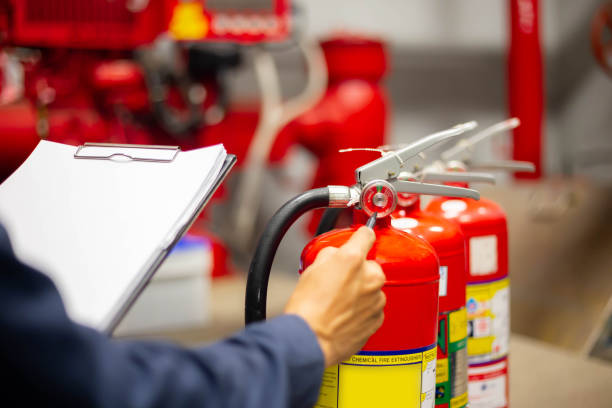If you’re looking to build or invest in an apartment or condo building, one of the most important features you need to take into consideration before making the final decision is fire safety. When it comes to this, any potential oversights could be fatal. Due to the severity of the matter, we asked experienced real estate and construction consultants from Vertex to point out all the possible dangers and ways you can make your building safer.
Fire events in apartment buildings or condominiums are not as rare of an occurrence as we would like to think. They can result in deaths, injuries, property damage, and open the possibility for litigation and even criminal investigations. This is why the owners & managers of such places along with their potential and current residents need to consider basic safety preparations.
Selecting the building to invest in
Some of the most important parts of the selection process is the property’s location and the condition it’s in. Would-be owners or renters should do their best to ensure that they ask for proof that the building they’re considering has taken a proactive approach regarding fire safety issues and that the recommended methodologies were followed during its construction. This includes escape plans and all the necessary warning devices.
The building systems must also be regularly updated according to state and local fire codes. This enables the tenants to safely leave the structure in case of any emergency, including a fire.

Fire safety measures to look out for when choosing an apartment
To make sure the building is fire-safe, consider this list of safety components you should take into account:
- Have a talk with current and/or previous property owners or managers and ask about fire safety components and features to familiarize yourself with all aspects of the building’s fire safety measures.
- Check if the whole building is equipped with water-based sprinklers, including staircases, hallways, and other common areas.
- See if smoke detectors and alarms are installed in every bedroom and each floor of the building.
- Look for at least two ways out of each bedroom. Windows should be large enough for occupants to be able to use them for escape if needed. Make sure the windows are not blocked.
- Verify that the fire escapes are in place and that they are operational. Also, look for clearly marked exit signs that should be illuminated and contain arrows that show escape directions.
- Check if every apartment is equipped with portable fire extinguishers and has a fire evacuation plan posted near the exit doors.
- Are emergency lighting fixtures installed in all hallways and staircases in case of a power outage or to illuminate those areas in case of smoke?
- Are all the exit doors equipped with manual alarm activation devices?
Things that you can do to minimize the risk
If some of these elements are missing, that doesn’t necessarily mean that the whole building is unsafe, as some of them may not be present in older buildings. But check how old the building is and if it’s being properly maintained.
Ways you can make the building more fire-safe include:
- Use surge protectors for appliances.
- Avoid overloading circuits.
- Make sure to replace cracked or otherwise damaged cords.
- Make sure that the emergency exits are easily accessible in case the occupants need to leave their homes as fast as possible.
Aside from the fire safety components, you should also create a streamlined escape plan and make sure all of the occupants are familiar with it. Inhaling smoke from the fire makes people confused, so everybody should know in advance precisely what to do in case of fire.

